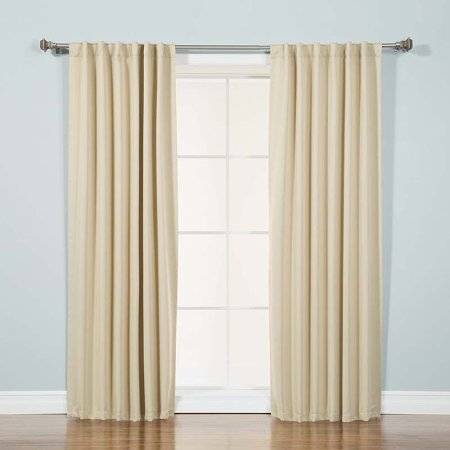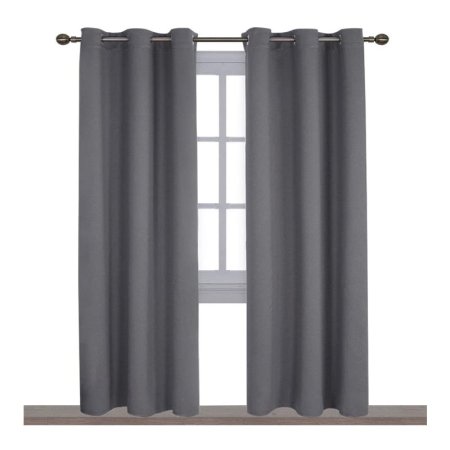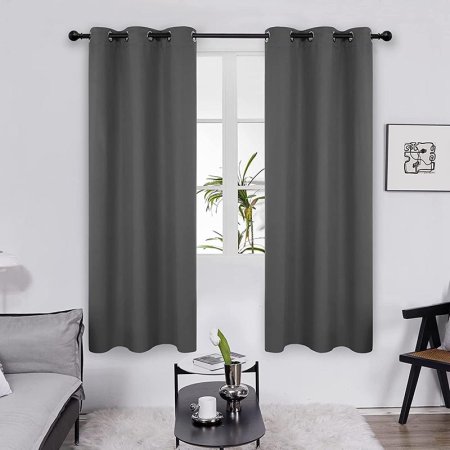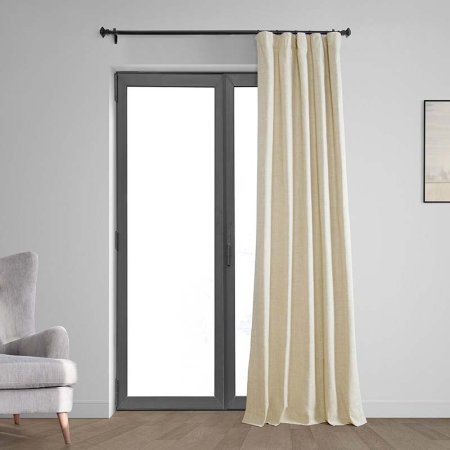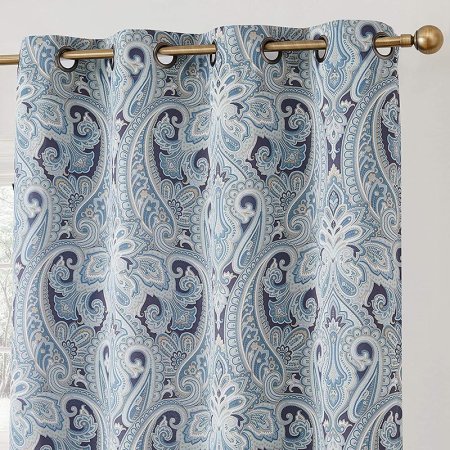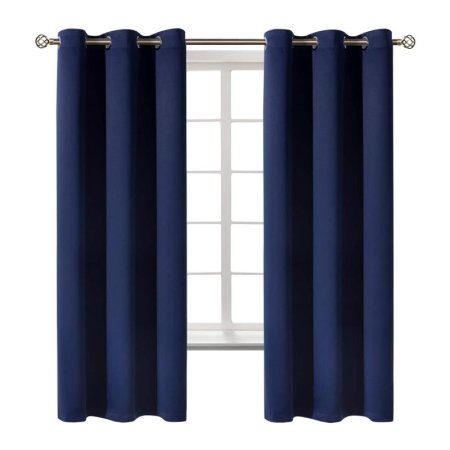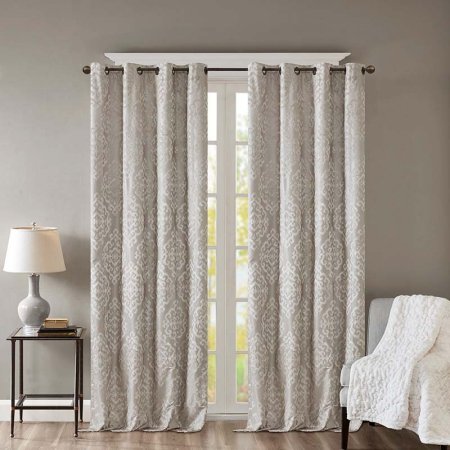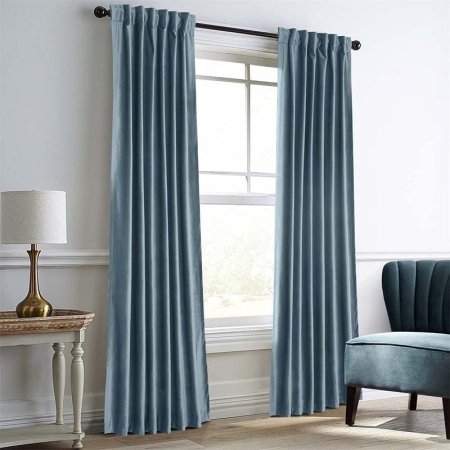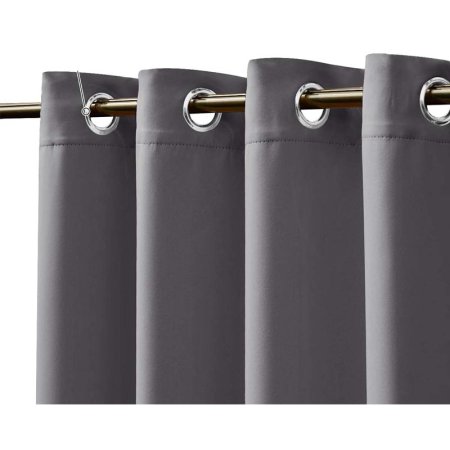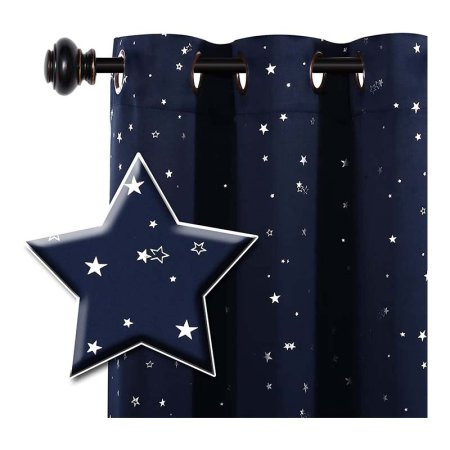A new year brings a fresh start, which might include the desire for home improvements. But how do you know where to focus your efforts to get the most bang for the buck?
“Your home is not only a sanctuary and safe place, but it is first and foremost a potential investment in your future,” says Phyllis Harbinger, FASID, NCIDQ, CID, a professional interior designer, strategy coach, author, and owner of Design Concepts/Interiors, LLC (DCI Studio) in Greenwich, Connecticut. “When deciding on a home improvement, I suggest researching which enhancements will actually give you the highest return on investment (ROI).”
We spoke to Harbinger and several other experts, including interior designers, home contractors, and real estate agents, to find out which high-ROI renovations they anticipate for 2025 to help boost your home’s value and comfort.
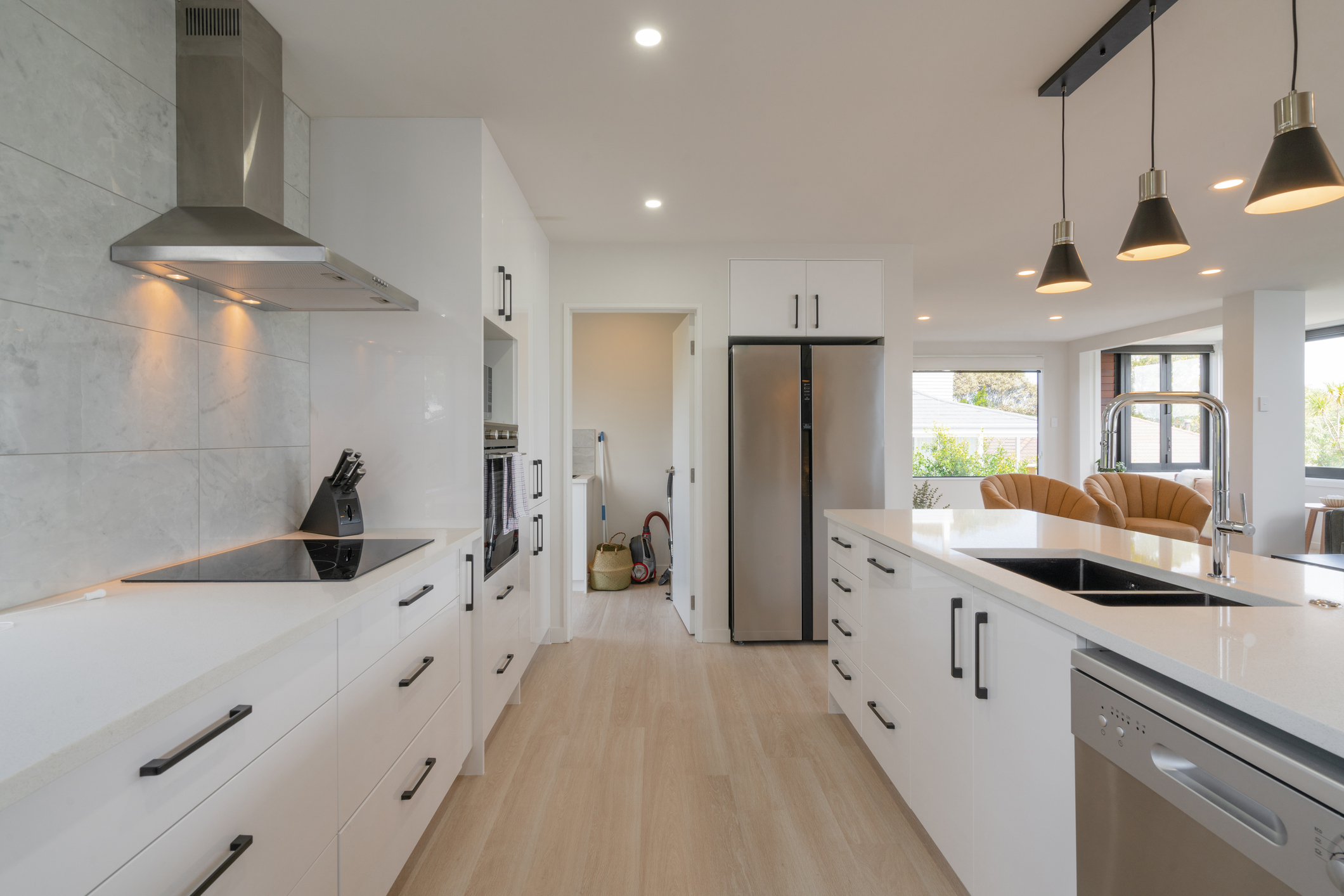
1. Kitchen Remodel
The kitchen is the heart of the home where friends and family love to gather. So a kitchen facelift is a must-have, says Suzy Minken, licensed real estate salesperson at Compass in Short Hills, New Jersey. More people are prioritizing modern, functional kitchens. “Depending on your budget and timing, there are relatively inexpensive improvements that can transform a dated kitchen to one that is fresh and modern,” says Minken.
Kitchen upgrades to focus on include adding stainless steel appliances; painting or replacing dark cabinets with white ones; swapping out older light fixtures with more modern options; and installing new countertops with a light, bright material like white quartz. Harbinger also suggests adding a kitchen island, if possible, since it is “a welcome addition to the hub of the home to gather, serve, eat, and do homework while adding incredible value,” says Harbinger.
2. Bathroom Renovation
Renovating bathrooms throughout the house is another smart investment to boost a home’s value and leave a lasting impression. Homeowners and home buyers are increasingly prioritizing features that combine functionality and lifestyle, with many willing to invest more to meet these needs, says Steve Gold, luxury real estate agent at Corcoran in New York City.
“One highly sought-after feature is a spa-like retreat in the bathroom, reflecting the growing wellness trend,” says Gold. “High-end fixtures like rainfall showers and luxury faucets…are popular choices for creating serene, indulgent environments. Not only do these upgrades elevate daily living, but they also offer significant returns on investment,” he says.
If budget is an issue, Minken recommends focusing on replacing the bathroom vanity and sink, shower doors, floor tile, mirrors, and lighting to update bathrooms effectively for less investment.
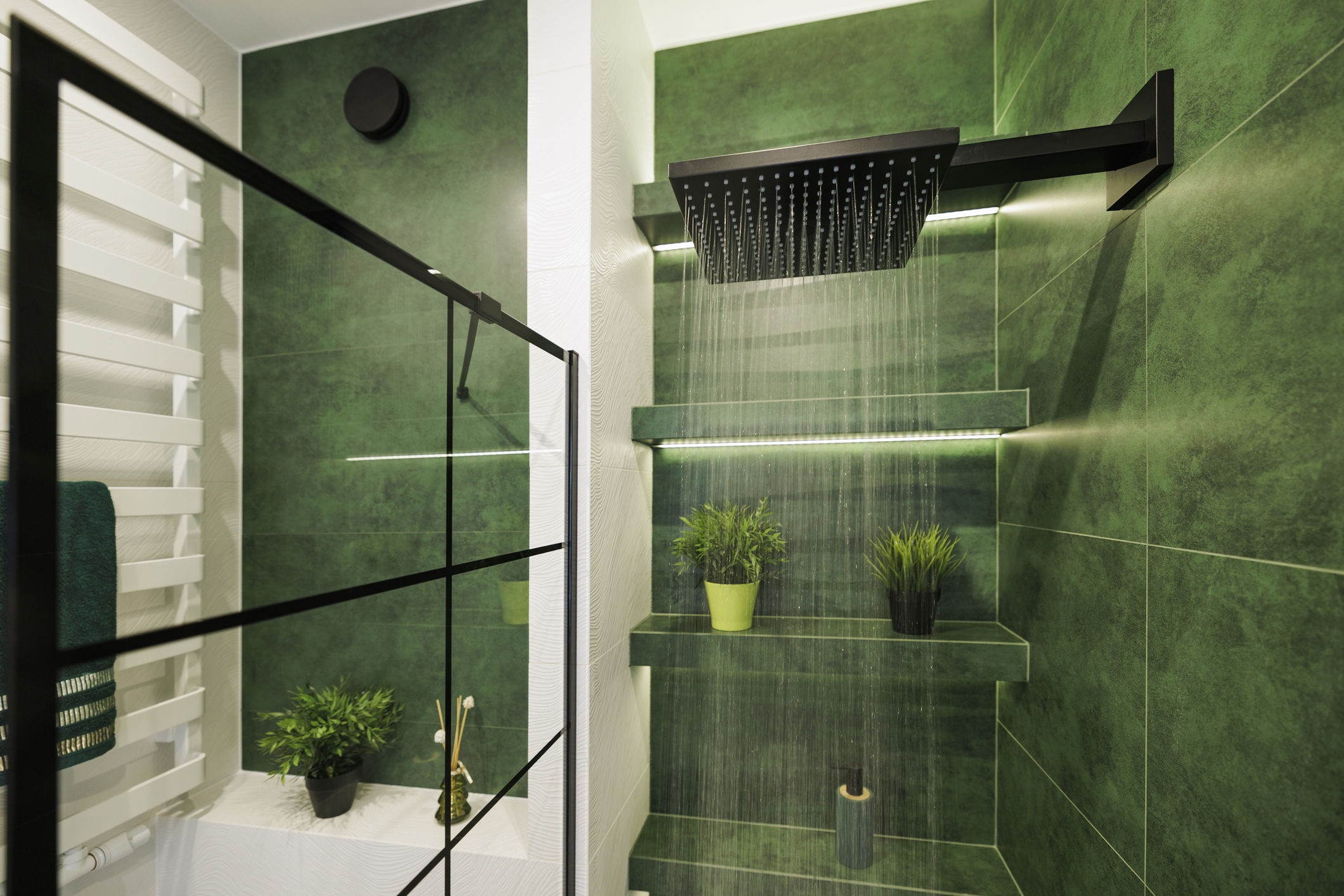
3. Outdoor Living Space Enhancements
Experts also agree that outdoor upgrades add value to a home. “Patios, decks, and outdoor kitchens allow for increased surface area and attract buyers looking for places to entertain and de-stress,” says Bubba Peek, a real estate investor and owner of Bubba Land Company based in Jacksonville, Florida. “These areas almost always pay off, making them a favorite in regard to ROI.”
Adding square footage to a porch or patio can improve your home’s value, says Harbinger. “Retractable screens, sliding and folding walls, an outdoor fireplace, or a wood-burning stove add months of enjoyment and lift our moods, enhancing our well-being,” she says. She is grateful for the new products on the market, such as resilient textiles, furnishings, and floor coverings that provide durable options for outdoor spaces.
4. Smart-Home Features
Technological innovation in homes is another big one, says Peek. “Clients purchasing homes tend to prefer systems that include smart technology, such as surveillance cameras, air conditioning controls, and coordinated lighting systems.” According to Peek, “these upgrades bring added ease of use.” They also boost the house’s worth, which makes them valuable additions.
Harbinger agrees that technology presents an opportunity for renovations with high ROI. “From lighting and music systems to security and temperature control, smart-home technology can be life-changing,” she says. “We install lighting systems that follow daylight and program shades to lower and raise at appropriate times throughout the day. And motion sensors can illuminate a space as you walk through and turn off the lights as you leave,” says Harbinger.

5. Energy Efficiency Upgrades
Finally, upgrading a home with more energy-efficient products like solar panels, insulation, efficient HVAC equipment, multipanel windows, and window film is another beneficial way to invest in a home’s future. “Buyers are now looking for energy-efficiency features as a way to save money on bills, combined with investing into eco-friendly appliances,” says Peek. These choices can decrease energy expenses dramatically, while raising home appraisal values.
The post Experts Predict These 5 Home Improvements Will Have the Highest ROI in 2025 appeared first on Bob Vila.
]]>The post We Tested the Best Thermal Curtains for Easy Energy Efficiency appeared first on Bob Vila.
]]>Even the highest-rated windows present an opportunity for air to infiltrate the home, but thermal curtains offer an extra layer of insulation that can help make a home more energy efficient. But with so many kinds available, selecting energy-efficient yet stylish curtains can be a challenge. We tested all of the curtains below for several days, noting their ability to insulate, block light, and hold up to general wear and tear.
After testing, we found Best Home Fashion Thermal Blackout Curtains to be best at insulating, while also blocking light and being easy to clean.
We also spoke with an HVAC pro and design expert to get their take what on thermal curtains can do and how to select the right ones for the walls in your home. This guide reviews the results of our tests and the most important features to consider so you can choose from the best thermal curtains available.
- BEST OVERALL: Best Home Fashion Wide Basic Thermal Blackout Curtain
- RUNNER-UP: Nicetown Triple-Weave Noise-Reducing Thermal Curtain
- BEST BANG FOR THE BUCK: Deconovo Thermal Insulated Blackout Curtain
- UPGRADE PICK: Bodulf Cross-Linen Thermal Blackout Curtains
- BEST PATTERNED: HLC.ME Paris Paisley Blackout Grommet Curtain Panels
- BEST TEXTURED: Abihail Burlap Weave Thermal Extreme Blackout Curtain
- BEST COLOR SELECTION: BGment Thermal Blackout Curtains for Bedroom
- BEST NOISE REDUCTION: House of Hampton Dora Max Blackout Curtain Panel
- BEST VELVET: Dreaming Casa Darkening Thermal Velvet Curtains
- BEST FOR OUTDOORS: Nicetown Triple-Weave Outdoor Blackout Curtains
- BEST FOR KIDS: H.Versailtex Blackout Star Thermal Curtains for Kids
| Size Options | Material | Number of Colors | |
| Best Home Fashion Wide Basic Thermal Blackout Curtains | 54 to 132 inches long x 40 to 100 inches wide | Polyester | Numerous; varies by size and retailer |
| Nicetown Triple-Weave Noise-Reducing Thermal Curtain | 40 to 120 inches long x 29 to 55 inches wide | Polyester blend | Numerous; varies by size |
| Deconovo Thermal Insulated Blackout Curtain | 45 to 108 inches long x 42 to 100 inches wide | Polyester | Numerous; varies by size and retailer |
| Bodulf Cross-Linen Thermal Blackout Curtains | 84 to 120 inches long x 50 inches wide | Polyester | 8 |
| HLC.ME Paris Paisley Blackout Grommet Curtain Panels | 54 to 96 inches long x 50 inches wide | Polyester | 5 |
| Abihail Burlap Weave Thermal Extreme Blackout Curtain | 63 to 96 inches long x 52 inches wide | Polyester | 4 |
| BGment Thermal Blackout Curtains for Bedroom | 45 to 120 inches long x 38 to 70 inches wide | Polyester | 30 |
| House of Hampton Dora Max Blackout Curtain Panel | 84 to 108 inches long x 50 inches wide | Polyester | 5 |
| Dreaming Casa Darkening Thermal Velvet Curtains | 63 to 102 inches long x 42 to 100 inches wide | Velvet | 12 |
| Nicetown Triple-Weave Outdoor Blackout Curtains | 72 to 120 inches long x 52 to 140 inches wide | Polyester | 14 |
| H.Versailtex Blackout Star Thermal Curtains for Kids | 63 to 96 inches long x 40 to 52 inches wide | Polyester | 5 |
Our Top Picks
With so many different types of thermal curtains on the market, making a decision on which to buy can be challenging. The following list breaks down some of the best options in various categories. Each of the curtains on this list was tested for at least 5 days, with their thermal-control, light-blocking, and noise-control abilities at the forefront of the testing process.
Best Overall
Best Home Fashion Wide Basic Thermal Blackout Curtain
Product Specs
- Dimension options: 54 to 132 inches long by 40 to 100 inches wide
- Material: Polyester
- Number of colors: Numerous; varies by size and retailer
What We Like
- Excellent light blocking
- Multiple colors in deep, rich hues
- Machine-washable fabric for easy upkeep
What We Don’t Like
- Fabric creases can be difficult to remove
- Back of curtain displays the curtain color
With its high insulating and light-blocking qualities, this thermal curtain from Best Home Fashion adds an extra layer of insulation to windows while contributing to the room’s aesthetics. It features triple-weave polyester construction that includes a layer of black yarn, keeping out up to 99 percent of light (the darker color choices are most effective) and 100 percent of ultraviolet (UV) rays, helping to keep the home warm in the winter and cool in the summer.
Each panel features attractive antique bronze grommets that are 1.6 inches in diameter. These panels come in lengths between 54 to 132 inches and widths from 40 to 100 inches. With dozens of colors available (options vary by size and retailer), there is sure to be an option that matches your home’s decor. These curtains are machine washable, making them easy to maintain.
The curtains did an excellent job of insulating and blocking light. We tested the extra-wide curtain panel in burgundy. The dark, rich color kept nearly all light out, and the thick fabric draped well. The only downside to these is that the curtain’s back is the same color as the front. Those who like uniform curtain colors from the exterior of their home will need a second neutral layer to face the street.
Get the Best Home Fashion thermal curtains at Amazon, The Home Depot, or Best Home Fashion.
Runner-Up
Nicetown Triple-Weave Noise-Reducing Thermal Curtain
Product Specs
- Dimension options: 40 to 120 inches long by 29 to 55 inches wide
- Material: Polyester blend
- Number of colors: Numerous; varies by size
What We Like
- Many sizes to choose from
- Good noise reduction
- Extensive color options
What We Don’t Like
- Colors can fade in constant, direct sunlight
This set of thermal curtains from Nicetown features insulating layers with a black yarn layer sandwiched between two microfiber layers. They provide protection against winter cold and summer heat while reducing noise and blocking up to 99 percent of sunlight.
These curtains feature 1.6-inch grommets, making them suitable for most standard curtain rods. A selection of over 30 solid colors makes them ideal for a variety of styles. And, with sizes ranging from 40 inches long by 29 inches wide to 120 inches long by 55 inches wide, they’ll fit virtually any window. Their machine-washable fabric makes them easy to clean, though getting wrinkles out can take some work.
During testing, we found the triple-layer design effective at hiding the inner black thread layer. However, we also found that the manufacturer’s claim of 99 percent light blocking was a bit of an exaggeration. While they did a good job of blocking out light and heat, we’d put the percentage closer to between 75 and 80. They also dampened some noise but were not entirely noise blocking.
Get the Nicetown noise-reducing thermal curtains at Amazon.
Best Bang for the Buck
Deconovo Thermal Insulated Blackout Curtain
Product Specs
- Dimension options: 45 to 108 inches long by 42 to 100 inches wide
- Material: Polyester
- Number of colors: Numerous; varies by size and retailer
What We Like
- Affordable compared to similar options
- Triple-layered for increased insulation and light blocking
- Machine-washable fabric
What We Don’t Like
- Cheaper materials may not last as long
Window treatments don’t have to be expensive, as these thermal curtains from Deconovo prove. These energy-saving insulated curtains feature three layers of fabric for maximum blackout and insulation quality, cutting those energy bills without demanding you invest a lot of money up front.
These curtains include standard 1.6-inch grommets and are available in 18 sizes, ranging from 45 to 108 inches long by 42 to 100 inches wide. With over 30 colors to choose from (selection varies by size and retailer), there are plenty of options to match home decor. Cleaning the Deconovo curtains is easy: Just throw them in the washing machine on a cold, gentle cycle.
The Deconovo curtains look similar to the other curtains tested—even those that cost a lot more. They block out 75 to 80 percent of light and a similar amount of heat. The fabric doesn’t have quite the heft of some of the other curtains on the list, but they’re a great option for those on a budget. Keep in mind that the price is for a single curtain only—double the price to purchase a pair.
Get the Deconovo thermal curtains at Amazon, Deconovo, or Walmart.
Upgrade Pick
Bodulf Cross-Linen Thermal Blackout Curtains
Product Specs
- Dimension options: 84 to 120 inches long by 50 inches wide
- Material: Polyester
- Number of colors: 8
What We Like
- High-quality material looks like linen
- Heavy material with excellent drape
- Excellent light blocking and noticeable thermal control
What We Don’t Like
- Comes in limited sizes
- Dry-clean only
Those who want an understated luxe look will appreciate the Bodulf cross-linen curtains, designed to look similar to expensive linen. Unlike traditional stiff polyester, the weight and thickness of these curtains allow them to drape beautifully—they even feel like high-end linen.
These curtains, sold as single panels, have a rod pocket, tabs, and a hook belt, offering a wide range of hanging options. Their white foam backing offers thermal control, lighting blocking, and sound absorption. Plus, the white backing creates a uniform window experience on the home’s exterior. Offered in only four sizes that range from 84 inches long by 50 inches wide to 120 inches long by 50 inches wide, these curtains might not fit every window. However, they come in multiple colors, ranging from neutrals to rich black or indigo, that are likely to please most.
During testing, the Bodulf curtains offered excellent light blocking and thermal control. They dampened some sound, but they didn’t bring it down as much as some of the thicker curtains. Of the curtains we tested, these stood out for their balance of performance and appearance. We didn’t love that they’re dry-clean only, but to maintain the curtain’s stunning appearance, it’s worth it.
What our tester says: “These curtains felt the most high-end of any that I tested. They draped beautifully,” —-Stacey L. Nash, Product Reviews tester and writer
Get the Bodulf thermal curtains at Wayfair.
Best Patterned
HLC.ME Paris Paisley Blackout Grommet Curtain Panels
Product Specs
- Dimension options: 54 to 96 inches long by 50 inches wide
- Material: Polyester
- Number of colors: 5
What We Like
- Attractive paisley-patterned design
- Great for saving on energy costs
- Filters 60 percent of light and dampens sound
What We Don’t Like
- Lighter colors tend to fade over time
With its diverse and rich collection of paisley patterns, the HLC.ME curtains add flair and visual interest. HLC.ME’s curtains use triple-weave polyester fabric to insulate windows, saving up to 30 percent on energy costs.
The HLC.ME curtains are machine washable and dryer-friendly on a low setting. The panels are all 50 inches wide and come in lengths ranging from 54 inches to 96 inches, allowing you to achieve looks ranging from tailored to elegant. Each set comes with two panels.
During testing, these curtains filtered out about 60 percent of light and a similar amount of sound. In artificial light, the muted colors almost look faded. When light shines through these curtains, the silver light-blocking panel gives the paisley pattern a silvery cast. They’re a great option if you love the pattern, but compared to the other options we tested, they’re not the most effective at controlling temperature or light.
Get the HLC.ME thermal curtains at Amazon, Walmart, or HLC.ME.
Best Textured
Abihail Burlap Weave Thermal Extreme Blackout Curtain
The name of these curtains include the word “extreme,” which proved apt based on our testing.
Product Specs
- Dimension options: 63 to 96 inches long by 52 inches wide
- Material: Polyester
- Number of colors: 4
What We Like
- Thick fabric and lining keep out nearly all light
- Noticeably regulates temperature and sound
- Machine-washable fabric with a detailed but subtle weave
What We Don’t Like
- May have a few loose threads upon opening
- Tend to wrinkle easily
Advertised as 100 percent light blocking, these curtains from Abihail lived up to their claim. They also did an excellent job maintaining the room temperature, and while they didn’t completely block out sound, there was a distinct dampening effect.
The Abihail curtains are only available in three sizes, ranging from 63 to 96 inches long by 52 inches wide, but if there’s a size to match your window, you won’t be disappointed. With a 1.5-inch-diameter grommet, they fit most standard curtain rods. The burlap weave texture of their polyester rayon blend adds to the richness and detail of a room without overwhelming your overall decor.
In addition to their performance, we also liked how easily these curtains washed. They arrived stiff, with noticeable wrinkles and a few loose threads that needed clipping. They relaxed somewhat after washing and drying, but they were still a bit stiff rather than drapey and had to be hung immediately to prevent new wrinkles from appearing.
Get the Abihail thermal curtains at Wayfair.
Best Color Selection
BGment Thermal Blackout Curtains for Bedroom
Product Specs
- Dimension options: 45 to 120 inches long by 38 to 70 inches wide
- Material: Polyester
- Number of colors: 30
What We Like
- Multiple sizes available with a great range of colors
- Simple, solid color choices work well in most homes
- Can be lightly ironed to eliminate wrinkles
What We Don’t Like
- No neutral backing fabric
With 30 colors to choose from, these thermal curtains from BGment have style options to suit most rooms. They feature a triple-weave design of polyester microfiber and black yarn to insulate in both the summer and winter while remaining soft to the touch. During testing, we found that those three layers also muffle outside noises while blocking between 80 and 95 percent of light, facilitating some sleeping in on the weekends.
Each panel uses 1.6-inch silver grommets, making them compatible with most standard rods. These curtains are easy to maintain, too. Simply throw them in the washing machine on the gentle cycle with cold water and tumble dry on low. BGment thermal curtains come in sizes ranging from 45 inches to 120 inches long by 38 to 70 inches wide, though all sizes may not be available in all colors. Each set includes two curtain panels.
The wide color selection includes bold, deep colors that hold up to sunlight. However, the curtains don’t have a neutral backing, so they’re the same color from the outside of the house as they are on the inside.
Get the BGment thermal curtains at Amazon or Walmart.
Best Noise Reduction
House of Hampton Dora Max Blackout Curtain Panel
Product Specs
- Dimension options: 84 to 108 inches long by 50 inches wide
- Material: Polyester
- Number of colors: 5
What We Like
- Easy to machine wash and dry
- Heavy, thick, luxurious fabric
- Excellent sound, light, and noise blocking
What We Don’t Like
- Comes in limited sizes
For homes where outside noise is an issue, these House of Hampton curtains are a classy solution. Thick and heavy, the polyester fabric blocks noise, light, and heat from the bedroom, and the Jacquard pattern adds a touch of velvet for extra texture. During testing, these curtains muffled sounds and acted as an effective barrier that kept the bedroom completely dark until light barely peaked over the top near the rod.
Available in a handful of pleasing solid colors, we tested these curtains in silver. They featured a champagne-colored foam backing that provided additional thermal, light, and noise blocking as well as the unified exterior look we prefer. However, keep in mind that backing color varies by curtain color—certain colors may not present a neutral exterior appearance, requiring a second liner curtain.
The House of Hampton curtains come in three sizes—84 to 108 inches long by 50 inches wide—and feature built-in grommets that fit up to a 1.25-inch rod. Those sizes will fit many standard windows but could limit placement in some homes. Despite the high-end look of these curtains, they’re easy to machine wash. Plus, machine washing quickly took out wrinkles during the testing process.
Get the House of Hampton thermal curtains at Wayfair.
Best Velvet
Dreaming Casa Darkening Thermal Velvet Curtains
Product Specs
- Dimension options: 63 to 102 inches long by 42 to 100 inches wide
- Material: Velvet
- Number of colors: 12
What We Like
- 12 luxurious, rich color options
- Beautiful, heavy fabric with excellent drape and texture
- Easy to clean for a velvet curtain
What We Don’t Like
- Holds wrinkles, which can be difficult to remove
The Dreaming Casa velvet curtains look luxurious, drape beautifully, and add an intriguing touch to any room. They’re not quite as thermally insulated as most other curtains on our list, but they still help maintain room temperature better than the average curtain. Constructed of a single layer of unlined velvet, their efficacy regarding temperature control was about 75 percent. They blocked a similar percentage of light (they’re considered light filtering rather than blocking), with darker colors blocking better than light colors.
Despite those things, we loved these velvet curtains in testing. They have a 2-inch rod pocket and tabs and come in 20 sizes, offering options that accommodate most window sizes. Their heavy velvet fabric brings texture to the room while reducing light. They come in 12 rich colors, ranging from deep black and coffee to lighter hues of rose red or green.
As much as we liked these curtains, we did have issues with wrinkles. We washed them in cold water, hung them to dry, and even steamed them, but the velvet held its wrinkles. Velvet can be ruined with ironing, so expect a bit of a crinkled look.
Get the Dreaming Casa thermal curtains at Amazon.
Best for Outdoors
Nicetown Triple-Weave Outdoor Blackout Curtains
Product Specs
- Dimension options: 72 to 120 inches long by 52 to 140 inches wide
- Material: Polyester
- Number of colors: 14
What We Like
- Triple-layer fabric provides shade, wind protection, and privacy
- Wide range of color choices
- Heavy, waterproof fabric and water-resistant grommets hold up to weather
What We Don’t Like
- Color can fade over time if left up continually
A summertime alfresco dinner stays cool and comfortable with thermal-insulated outdoor curtains. These multilayered backyard curtains from Nicetown provide cooling shade while also giving you privacy from the neighbors. They feature a layer of high-density black yarn sandwiched between two layers of polyester to protect you from the sun’s damaging rays while also blocking wind.
Outdoor curtains wouldn’t be much good if they couldn’t endure the elements. These curtains are waterproof and include rustproof grommets. And when they get dirty, you can throw them in the washing machine to freshen them up. Available in 14 color options and a wide variety of sizes, these curtains will suit various patio sizes and styles.
We tested the Nicetown outdoor curtains in the 108-inch length. The length alone adds heft, but the fabric also makes these curtain panels heavier, which is exactly what you want outdoors. They do an excellent job of controlling light and resisting water damage, as long as you don’t leave them outside during a downpour. They’re sold as single panels with some sizes available as a set—simply measure your space and order accordingly.
Get the Nicetown outdoor thermal curtains at Amazon.
Best for Kids
H.Versailtex Blackout Star Thermal Curtains for Kids
Product Specs
- Dimension options: 63 to 96 inches long by 40 to 52 inches wide
- Material: Polyester
- Number of colors: 5
What We Like
- Thick fabric blocks light, sound, and heat well
- Reflective stars create a whimsical, comforting environment
- Easy to clean and dry; washing also helps remove wrinkles
What We Don’t Like
- Limited sizes available
- Backing is not a neutral color
The fun and whimsy of a child’s room can spark their imagination, but it still needs to be conducive to a good night’s sleep. That’s where the H.Versailtex blackout curtains come into the picture. These star-themed curtains hint at a galaxy far, far away or a dreamy unicorn fantasy land, depending on the color. The light-blocking, heat-controlling, noise-reducing fabric also creates a dark, cool sleep environment.
Made of hypoallergenic polyester, these curtains are tough and functional but easy to keep clean. This is often a big factor in choosing kids’ curtains, which can take a beating from tiny hands. We washed them, which cleaned them and helped remove wrinkles—they looked as good as new. Testing also revealed the reflective nature of the silver stars. All it took was a night light to turn them into a gently sparkling window cover that was magical and comforting for the kids.
These curtains come in sizes that range from 63 to 96 inches long by 40 to 52 inches wide. There are only four sizes in total, which is a bit limiting. The other issue is they don’t have a neutral backing, which could make the house’s exterior look less uniform. However, for the price and performance, it’s hard to beat the H.Versailtex for a child’s room.
Get the H.Versailtex thermal curtains at Amazon.
Jump to Our Top Picks
How We Tested the Best Thermal Curtains
We installed all the curtains on our lists in bedrooms and evaluated each by an established set of guidelines. We tested their ability to block light, regulate temperature, and hold up to use and machine washing (if applicable).
To test the curtains’ light-blocking abilities, we turned off daytime interior lights and scored how well the curtains prevented outdoor light from leaking in. To test thermal control, we compared room temperature several times daily with the curtains open versus closed. We also scored the curtains based on fabric quality, thickness, and drape, factors that influence how well the curtains wash and wear over time. We also washed the curtains according to the manufacturer’s instructions if applicable.
| Testing Stats | |
|---|---|
| Products tested | 11 |
| Time spent testing | 2 months |
| Tests performed | 3 |
| Price range | $15 to $50 |
What to Consider When Choosing Thermal Curtains
Although the fabric used to create thermal curtains is crucial to how well it insulates the windows in the home, you will also want to consider other factors, including size, noise reduction, and aesthetics.
Type
Thermal curtains are available as standard classic curtains as well as Roman shades, hobbled shades, balloon shades, and side-draw shades, to name a few. Thermal curtains consist of insulated padding sandwiched between material suspended by a curtain rod that prevents air from passing into the room from the window.
Side-drawn shades work best for large windows, French doors, and sliding-glass doors. Roman shades and hobbled shades open and close through this classic stacking style. Balloon shades function similarly but gather the fabric as they rise. Unlike conventional blinds, Roman and balloon shades feature thick padded material that works well for insulating.
Thermal curtains come in various sizes ranging in length from 45 to 132 inches and in width from 36 inches up to 52 inches. For the curtains to properly insulate, they should be large enough to cover the entire window casing.
Size
Beyond that, the size you want depends on the look you’re trying to achieve. For a traditional look, mount the curtain rod so that the curtain hangs from 6 inches above the top of the window frame to about 3 inches below the bottom. The curtains should also extend beyond either side of the window by 3 inches. For a more modern style, mount the rod as close to the ceiling as possible and allow the curtains to extend to about 1 inch above the floor or allow them to rest on the floor to create a puddled effect.
If you’re using blinds or shades, they must fit tightly inside the window casing to prevent air from leaking around the edges of the blinds.
Fabric
Like standard curtains, insulated curtains come in a wide variety of fabrics, including cotton, polyester, silk, microfiber, and even velvet. Polyester and microfiber are the most effective fabrics for thermal curtains, as they resist moisture, which can build up in the air trapped between the curtain and the windowpane.
Aesthetic
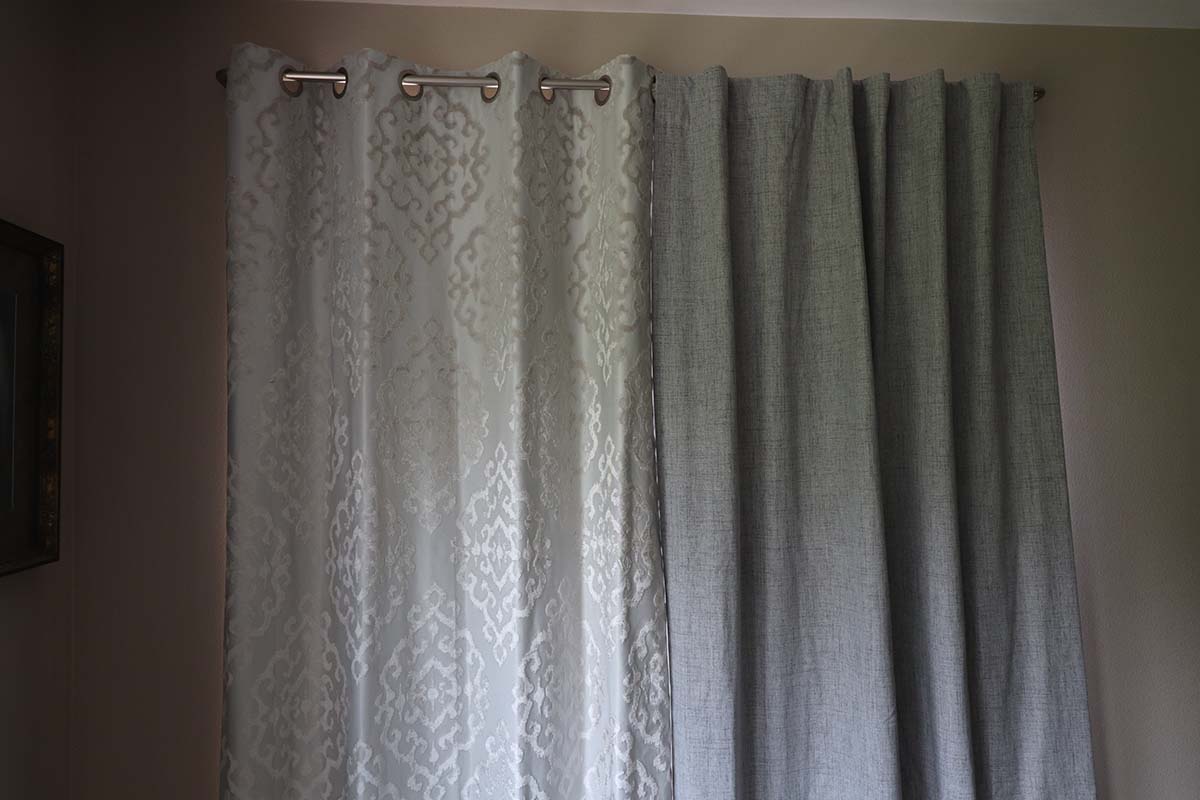
While insulated curtains may make you think of tacky window treatments found in cheap hotel rooms, they come in a wide variety of stylish colors and patterns. These curtains go beyond being functional, featuring attractive grommets and cuts that allow you to achieve traditional, modern, and classic looks.
We interviewed Artem Kropovinsky, interior designer and founder of Arsight based in New York City, who gave us an insight on what to look for style-wise. “Go for textured and patterned drapes in bohemian space, while clean lines with neutral colors in a modern environment.” This expert advice can also be applied to regular curtains, so it’s a good tip to keep in mind when decorating a space.
Noise Reduction
The thick layers or multiple layers of material in an insulating curtain not only prevent heat loss in the home but also absorb sound waves. This works both ways, muting the sound of a neighbor’s barking dog or screaming children while also muffling loud music in the home. Thermal curtains can reduce the noise in the home by as much as 10 decibels.
Insulation
“In simple terms, thermal curtains help you keep the heat where you want it—inside or outside,” explains HVAC expert Jimmy Hiller, founder and president of Happy Hiller in Nashville, Tennessee. So how do thermal curtains achieve this?
They use multiple layers of material to insulate. The middle layer, which is the insulating layer, consists of a heat-resistant material such as foam, felt, thick cotton batting, or flannel. A thermal curtain should have at least two layers, although three is better. For maximum insulation in the summertime, they should also use blackout technology that eliminates up to 90 percent of light.
Whether talking about the insulation in a home’s walls or thermal curtains, insulation is measured using what’s known as R-value. The higher the R-value, the better the insulation qualities of the material. R-value generally ranges from 0, which is open air, to as high as 60, which is attic insulation. Windows also have an R-value. Single-pane windows have an R-value of 1, while Energy Star–rated windows typically have an R-value of 3. When properly installed, an insulated curtain can increase a window’s R-value to as high as 6.
Washing Machine vs. Dry-Clean Only
Some curtains are machine washable, making them easy to maintain. Many thermal curtains are even safe to dry in the dryer. Others require the trip to and expense of a dry cleaner. Be sure to follow the manufacturer’s instructions for cleaning to avoid damaging thermal curtains.
The Advantages of Owning Thermal Curtains
There are a variety of benefits to owning thermal curtains. With their multiple layers of fabric, these curtains provide an extra layer of insulation for windows, saving money on utility bills.
The same triple-layer design that keeps cold air out and warm air in, or vice versa in the summertime, also does an excellent job of dampening outdoor noise, creating a more peaceful environment inside the home.
Thermal curtains do a great job of filtering out light. Darker-color curtains will actually block all sunlight, allowing you to sleep in on those sunny Sunday mornings. This dense material also provides maximum privacy for bedrooms.
- Thermal curtains insulate windows, saving energy.
- They do an excellent job of blocking sunlight.
- They dampen outside noise.
- Thermal curtains provide maximum privacy.
FAQs
Although thermal curtains will actually function as blackout curtains due to the multiple layers of fabric they use to insulate the window, there are differences between these two curtain types. Whereas both feature multiple layers of fabric, thermal curtains feature a thick backing for insulation and may include a synthetic lining that resists moisture.
Thermal curtains use a triple or double layer of fabric with a layer of thick batting. The material is made of either polyester or microfiber to resist moisture, while the batting serves as a barrier that prevents air from entering the home.
While thermal curtains may not entirely keep cold out, they do raise the insulation level of windows, trapping cold air between the window and the curtain and preventing it from entering the room.
To hang thermal curtains so they are effective, it’s important to use the right size. Make sure the curtains extend beyond the window casing on all sides to provide enough coverage to block the air that passes through the window from entering the room. It’s crucial to make sure the curtains hang close enough to the wall so that there is no gap between the curtains that would allow air to pass between the two. This may require you to mount the curtain rod closer to the wall.
Most thermal curtains are machine washable, using cold water and a gentle cycle. Some can even handle a trip through the dryer. Just make sure to read the manufacturer’s instructions regarding care before attempting to machine wash curtains.
Meet the Tester
Stacey L. Nash is a writer and product tester specializing in all things home and garden. Her reviews combine her professional research experience and her practical experience living on 12 acres of land with four kids and a DIY husband. She reviews everything from kitchen tools to cleaning products to bedding.
Additional research provided by Tony Carrick.
The post We Tested the Best Thermal Curtains for Easy Energy Efficiency appeared first on Bob Vila.
]]>Have you heard of the color of the year 2025? As a color expert who has helped pick a color of the year, I’ve heard many doubters say the announcement is just a marketing ploy to get us to buy more stuff for our homes. Color of the Year, or COTY, which is what designers and color experts call it, is much more than a way to merchandise home decor and building products. There’s actually a bigger meaning behind it.
Choosing a color of the year is a process that can take a few years, so design experts gather in all parts of the country and all over the world to propose colors they feel will capture that year’s mood as a physical representation. Everything from politics and current events to social movements and pop culture factor into the pick. They slowly narrow down those suggestions until they settle on the color of the year.
For 2025, Pantone announced Mocha Mousse (Pantone 17-1230) as their pick because it captures the “global mood of connection, comfort, and harmony.”
“I love the selection of Mocha Mousse for Pantone’s color of the year,” says Kim Lewis, founder of Austin, Texas-based Kim Lewis Designs. “This color is a new neutral that can pair endlessly, but also stand strongly on its own,” she says. “The tone is rich, subtle, sexy, and understated—earthy, calming, and deeply engaging. Mocha Mousse offers a level of effortless sophistication and chic luxury,” says Lewis.

Include Mocha Mousse in your home one of several ways.
If you love Mocha Mousse, go ahead and paint your living room walls that hue. However, if you’re tempted to infuse some of the chocolate comfort into your home without making a long-term or large-format commitment, instead consider accents and easy-to-swap-out home decor. Here are a few ideas for using the 2025 color of the year:
- Choose fabrics for curtains or tablecloths with the chocolate color in their pattern.
- Paint a fireplace surround in Mocha Mousse.
- Stain wood, like exposed rafters or beams, in a rich mocha color.
- Paint or stain the trim around windows or doors.
- Paint or stain a bathroom vanity.
- Include wall art that features pops of chocolate in the design.

Find home decor in the 2025 color of the year.
It’s easier to find home furnishings and accessories in the Pantone color pick for 2025, because many shops feature these items in their selections. The following are some home decor items with the Mocha Mousse hue.
- Area rug. Roll out the carpet with an accent like this solid area rug from Garland, available at Lowe’s, that’s made for busy families. It’s durable, and the subtle checkered pattern will infuse any room with a rich and soothing vibe.
- Floating shelves. Hang some art to add visual interest to an empty wall space with these brown rectangular floating shelves from Kate and Laurel.
- Mirror. Add a mirror to your entryway or swap out the mirror over a sink for this brown framed wall mirror from Kate and Laurel.
- Lamp. Swap out a table lamp for a more earthy mojo from this brown table lamp with a glowing fabric shade from StyleCraft Home Collection.
- Chair. Expand your seating with a chocolate faux leather chair that has a comfortable lean, like this midcentury chair from Joybase, available at Amazon.
Tip: If you’re looking around for other items for your home or wardrobe to match the vibe of Mocha Mousse, use the words “chocolate brown” in your search.
More “Color of the Year” picks from major brands.
While Pantone is the most talked about color of the year, paint brands, furniture brands, gardening brands, and building product companies also select their colors of the year. While the colors might vary, there’s a common throughline of moodiness and groundedness among the 2025 picks. And all of these hues can be used as neutrals, pairing well with many other colors that you may already love for your home.
Mapped Blue (429-5DB) by Dutch Boy Paints
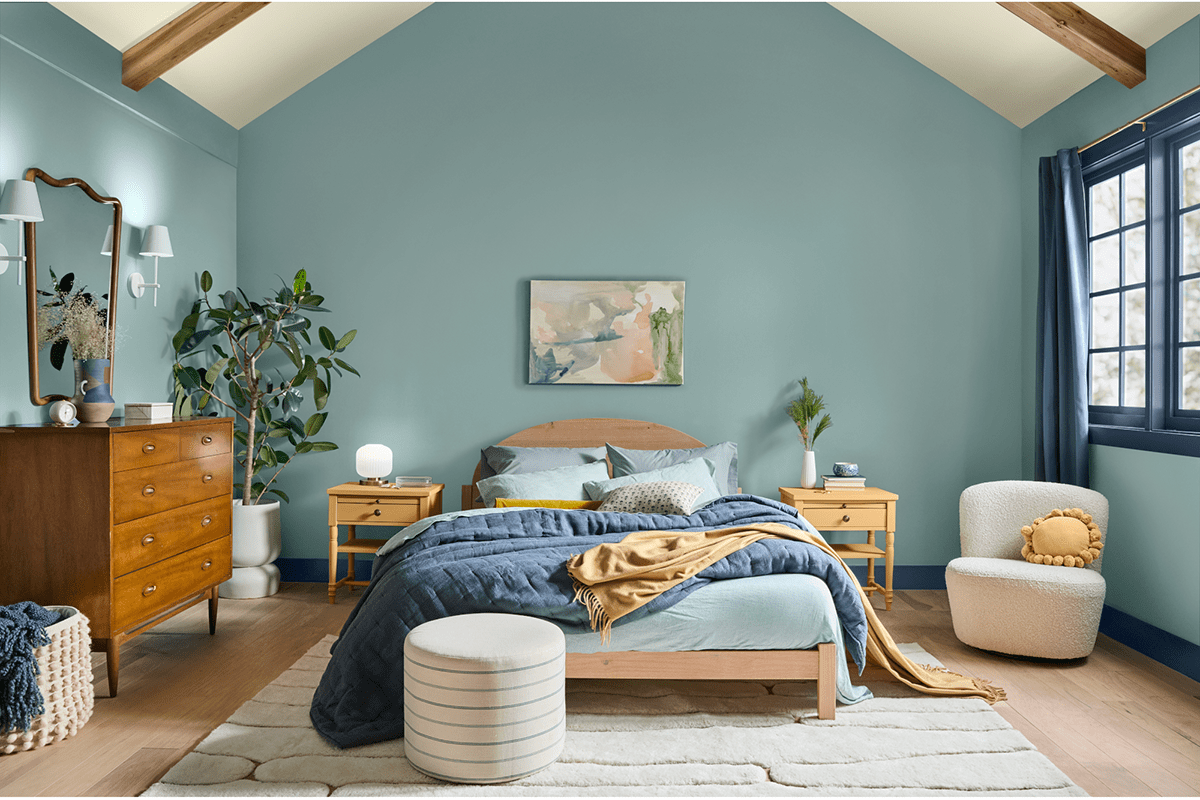
Mapped Blue is the 2025 color pick from Dutch Boy Paints. A gentle neutral, it’s a versatile color that is thoughtful and classic. The brand also created three palettes of colors that work with Mapped Blue, which makes it easier to develop a color scheme for a room or an entire home.
Violet by Minwax
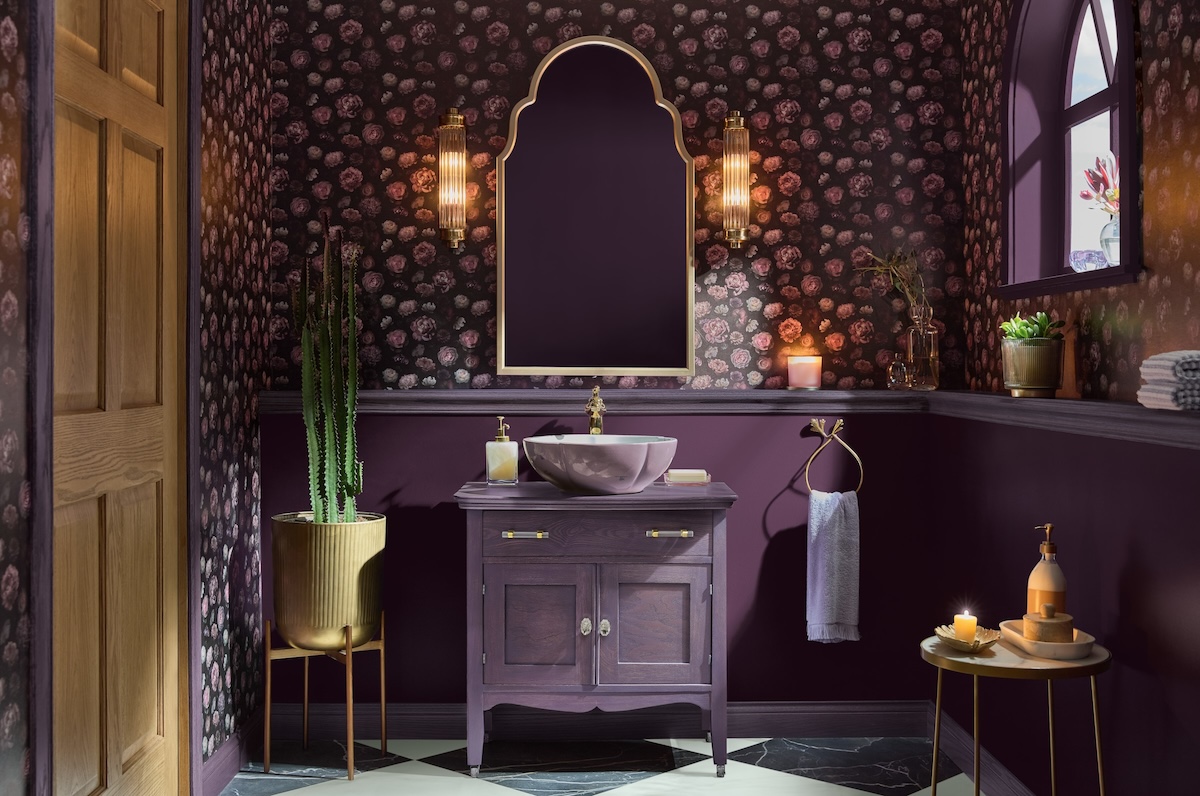
Minwax picked Violet as its color of the year for 2025. While it’s not a strict neutral, but is a bit more bold than traditional neutrals, it can be used as one in homes that are a little more moody with hues. The brand says they picked the stain because it’s a saturated and playful color that pairs well with others.
Raku (C2-549) by C2 Paint
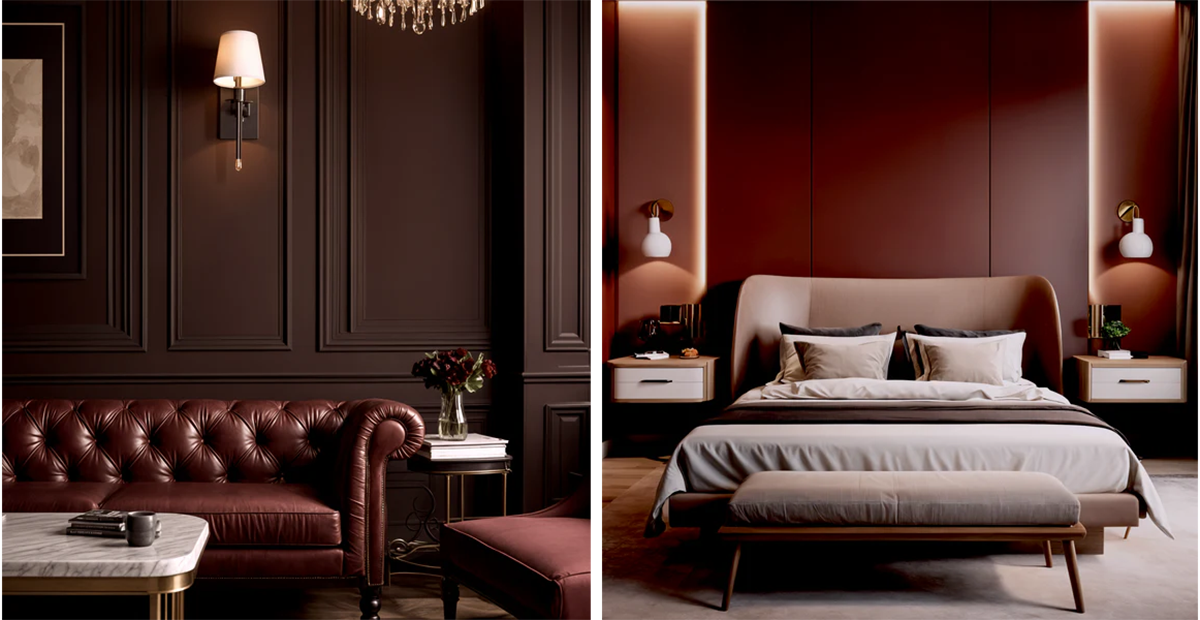
A color that is a reflection of ancient Japanese tea ceremonies, Raku is C2 Paint’s 2025 color of the year. As a harmonious blend of luxe modern vibe and a grounded traditional feel, the elegant hue is a rich neutral that can work well in nighttime hangout spaces like dining rooms, family rooms, and bedrooms.
Cinnamon Slate (2113-40) by Benjamin Moore


It’s not hard to spot the trend: Benjamin Moore’s Cinnamon Slate also makes a case for treating a velvety plum color as a neutral. It pairs well with antiqued wood tones, taupes, and charcoals to create a cozy space. Creamy white trim or color-blocking can keep this color from feeling too moody.
White Snow (SW 9541) by Sherwin-Williams
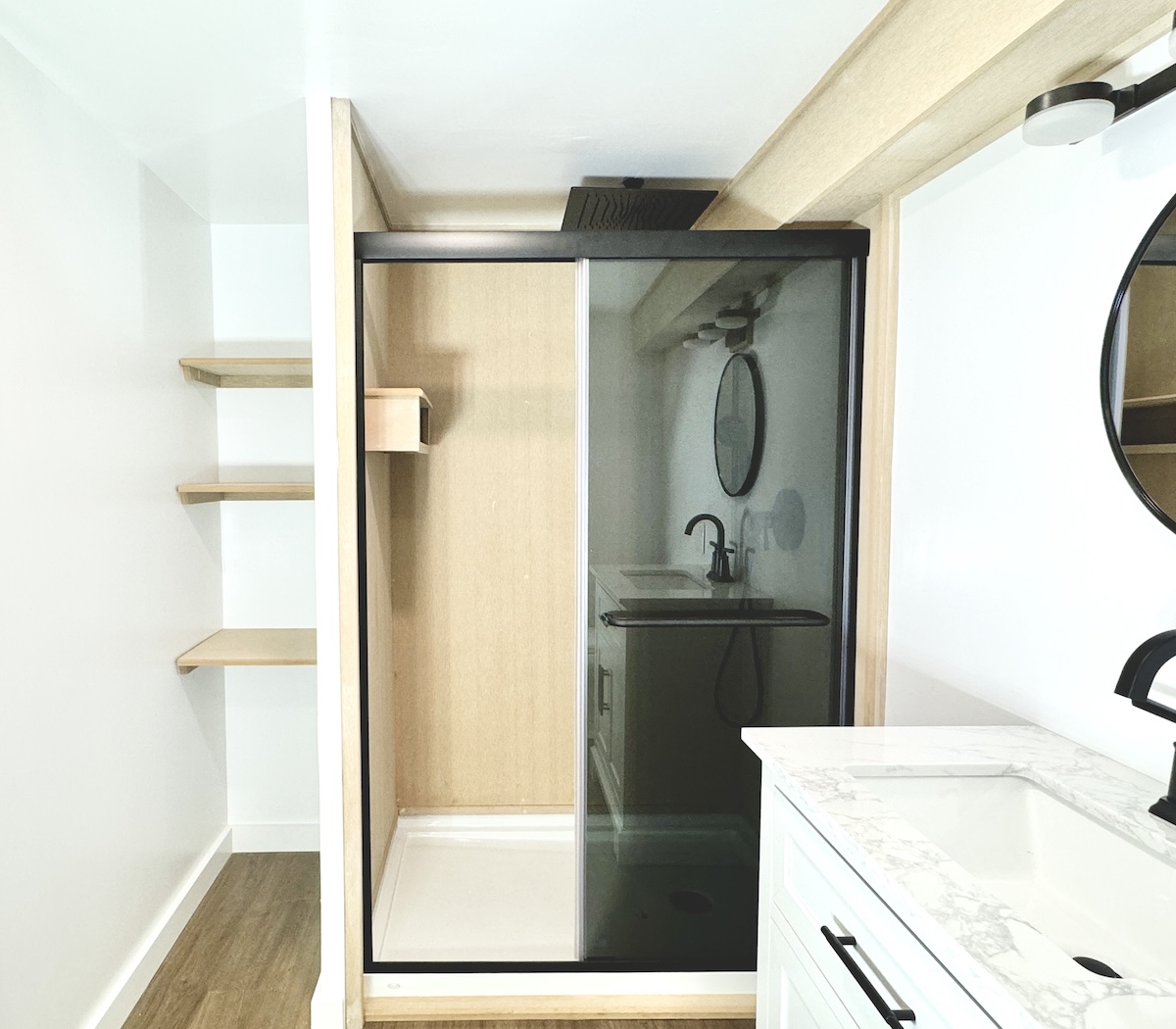
White Snow is a crisp white with a touch of warmth. Use it on all walls where you want bright and airy without being too cold, or incorporate it as a trim or ceiling color in rooms where a warmer hue is the star of the show.
But notably, this isn’t the only pick from Sherwin-Williams for its 2025 color, because the paint brand chose to create a capsule of colors to celebrate its 15th COTY anniversary. The other eight include Grounded (SW 6089), Sunbleached (SW 9585), Chartreuse (SW 0073), Bosc Pear (SW 6390), Rain Cloud (SW 9639), Clove (SW 9605), Malabar (SW 9110), and Mauve Finery (SW 6282). Like White Snow, all of the colors can be used as neutrals, and some—like chartreuse and mauve—are non-traditional neutrals.
Evening Blue by James Hardie

From James Hardie’s Statement Collection, Evening Blue practically pulls its hue from still lake waters at dusk—deep, moody, and yet calming. Maybe it’s the hint of a green undertone, but this siding shade connects well with nature without blending into your landscape. Plus, the gray that comes out in certain lights helps this striking blue into a non-boring neutral.
Hammered Black by Krylon
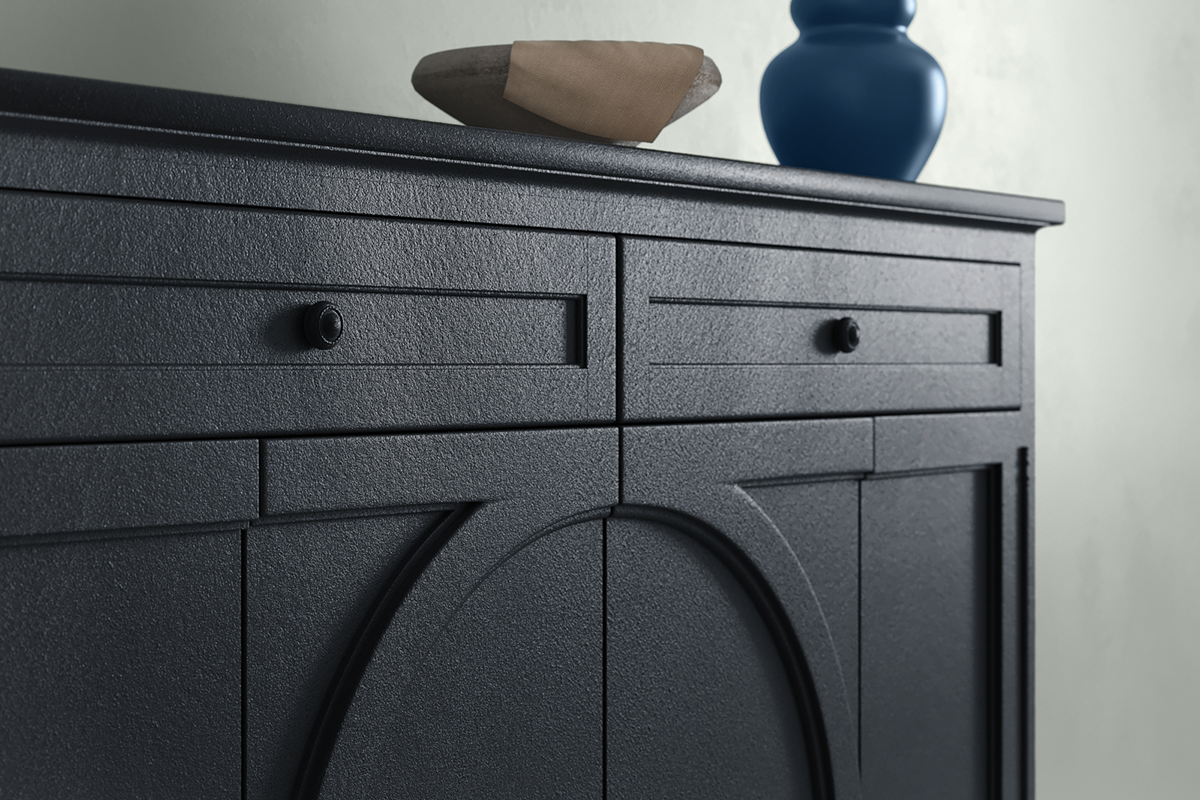
Krylon says it picked Hammered Black as its 2025 color of the year because it’s calm and grounding. This is the company’s first pick of a textured finish for the annual honor. Black is a timeless color that’s also a modern neutral, so it can make a space feel current without disrupting a low-key vibe.
The post These Are the Colors to Live By in 2025 appeared first on Bob Vila.
]]>Green paint colors offer seemingly endless possibilities when it comes to creating a fresh and inviting home. By including a green color—from soft sage to deep forest—in your color scheme, you can transform and freshen a space while creating a sense of connection to the outdoors.
Whether you’re looking to make a bold statement or create a subtle backdrop with nearly-white painted walls, there’s a green that could work for every room and style. Keep reading to see our top picks for the best green paint colors for home interiors.
1. Dried Thyme, Sherwin-Williams

“Dried Thyme ranks pretty high as one of my favorites,” explains Trina Rogers, color consultant at Five Star Painting in Temple, Texas. “It is a medium-dark muted green with just a bit of a gray-blue tone. It works well in many areas of the home including kitchen cabinets, interiors, and exteriors.”
She adds, “If Dried Thyme seems a little too green for you, compare it to the slightly more gray-green Retreat.”
2. Saybrook Sage, Benjamin Moore

A timeless sage green that brings subtle sophistication to a room, Saybrook Sage is a great choice for those who are looking to create a calming atmosphere. Its muted quality allows it to function as a neutral while still providing more character than standard beige or gray. It’s perfect for living rooms or bedrooms where you want to create a soothing effect without sacrificing style.
Get Saybrook Sage at Ace Hardware.
3. Green Smoke, Farrow & Ball

This deep, smoky green paint color has rich undertones, creating an atmosphere of timeless elegance. It’s particularly effective in home offices, dining rooms, or anywhere you want to create an intimate feeling, Green Smoke has dramatic depth while maintaining sophistication. It’s also an excellent choice for making a statement in rooms that get lots of natural light.
Get Green Smoke at Farrow & Ball.
4. Wethersfield Moss, Benjamin Moore

A rich, traditional green like Wethersfield Moss can bring warmth and character to a room. Wethersfield Moss works beautifully in both modern and classic settings. Its depth makes it particularly suitable for creating accent walls or highlighting architectural features, while its natural undertones help maintain a connection to the outdoors.
Get Wethersfield Moss at Ace Hardware.
5. Sea Salt, Sherwin-Williams
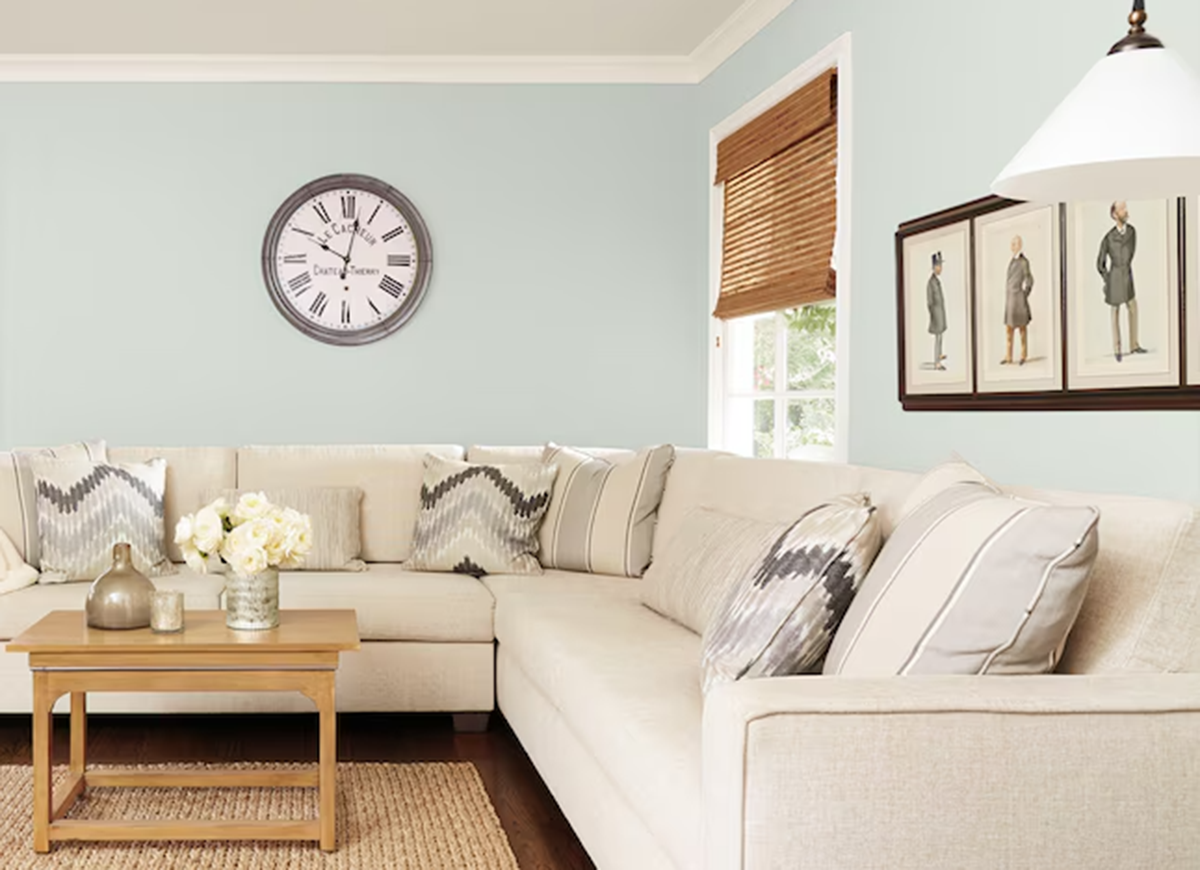
Sea Salt from Sherwin-Williams is a light green paint with subtle gray undertones that creates a fresh, coastal feeling. Perfect for bathrooms or bedrooms where you want a spa-like atmosphere, Sea Salt provides a gentle backdrop that can work with both warm and cool color schemes.
Get Sea Salt at Sherwin-Williams.
6. Hunt Club, Sherwin-Williams

This deep, versatile shade will add drama to any room. “Hunt Club is a dark, rich, blue-green that almost looks teal,” says Rogers. “If you want something with a little less blue tone, look at Isle of Pines. Both of these gorgeous saturated colors would do well in living areas or bedrooms to create a cozy space perfect for relaxing.” If you have a space that doesn’t receive a lot of natural light, consider leaning into a moody vibe with a deep color like this one.
Get Hunt Club at Sherwin-Williams.
7. Back to Nature, Behr

A balanced, earthy green, Back to Nature was recognized as the Behr color of the year in 2020, and it’s easy to see why. The tint has yellow undertones and brings a certain liveliness to interior spaces while being subtle enough for easy everyday living. It’s particularly effective in creating seamless indoor-outdoor connections in spaces with plenty of natural light.
Get Back to Nature at The Home Depot.
8. Sparkling Sage, Valspar
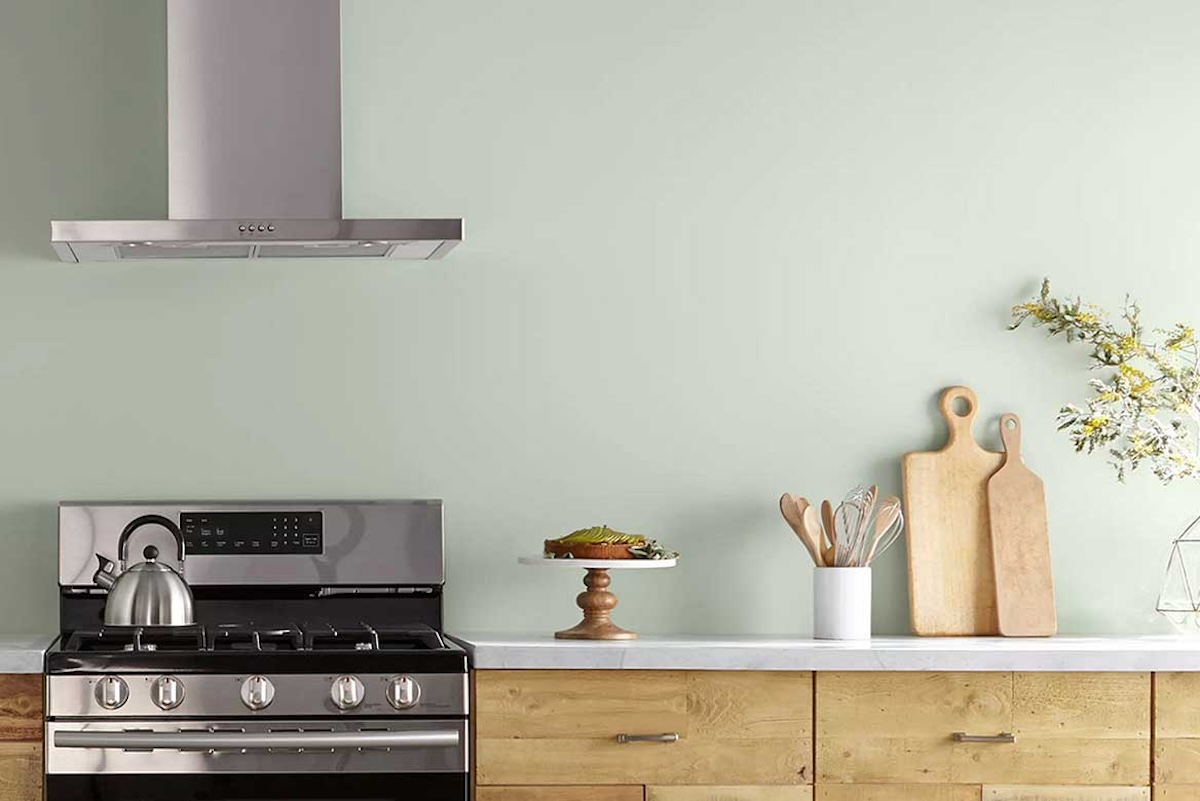
This refreshing take on sage green interior paint brings sophistication with a modern twist. Its bright, airy quality makes it perfect for kitchens and bathrooms where natural light can highlight its subtle variations. The balance of gray and green undertones allows it to pair well with both warm wood tones and cool marble surfaces, making it versatile enough for many different rooms.
9. Liveable Green, Sherwin-Williams

As its name suggests, this versatile green paint color creates an easy-to-live-with backdrop that creates a soothing vibe. Its balanced undertones make it particularly suitable for open-concept spaces where color flow is crucial. The color tone reads differently throughout the day, appearing more gray in dim light and showing its green undertones in bright sunlight.
Get Liveable Green at Sherwin-Williams.
10. Salamander, Benjamin Moore

Among dark green paint colors, this rich, green brings dramatic sophistication to a home. Its depth makes it perfect for creating intimate dining rooms or cozy libraries, while its subtle black undertones add a modern edge that works beautifully in contemporary settings. When paired with metallic accents, Salamander takes on an especially luxurious quality, making it ideal for spaces where you want to make a bold yet refined statement.
Get Salamander at Ace Hardware.
11. Soft Fern, Benjamin Moore

Soft Fern is a gentle, nature-inspired green that captures the essence of spring foliage. Its subtle warmth makes it an excellent choice in bedrooms and living spaces where you want to maintain a connection to nature without overwhelming the senses. The color’s versatility allows it to work equally well in traditional and modern settings, particularly when paired with crisp white trim or natural textures.
Get Soft Fern at Benjamin Moore.
12. Mizzle, Farrow & Ball
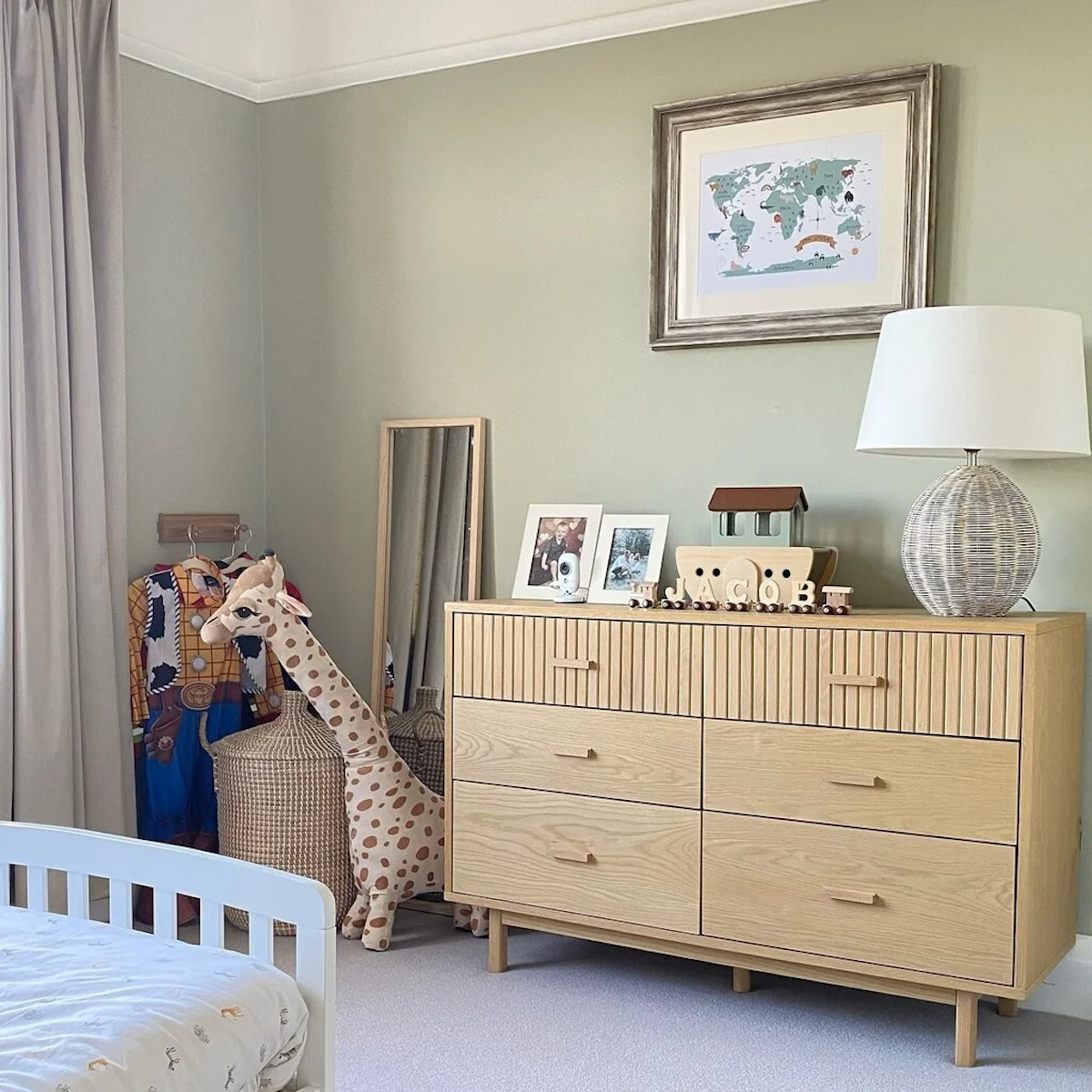
This sophisticated gray-green creates a gentle, misty atmosphere that transforms beautifully throughout the day, making it perfect for rooms with changing light conditions. Its complex undertones provide depth and interest while maintaining a soothing presence that works particularly well in bedrooms and bathrooms. The color’s ability to shift between gray and green, depending on the light source, makes it an excellent choice for spaces where you want to create a subtle, ethereal quality while maintaining architectural interest.
13. Vine Leaf, Behr
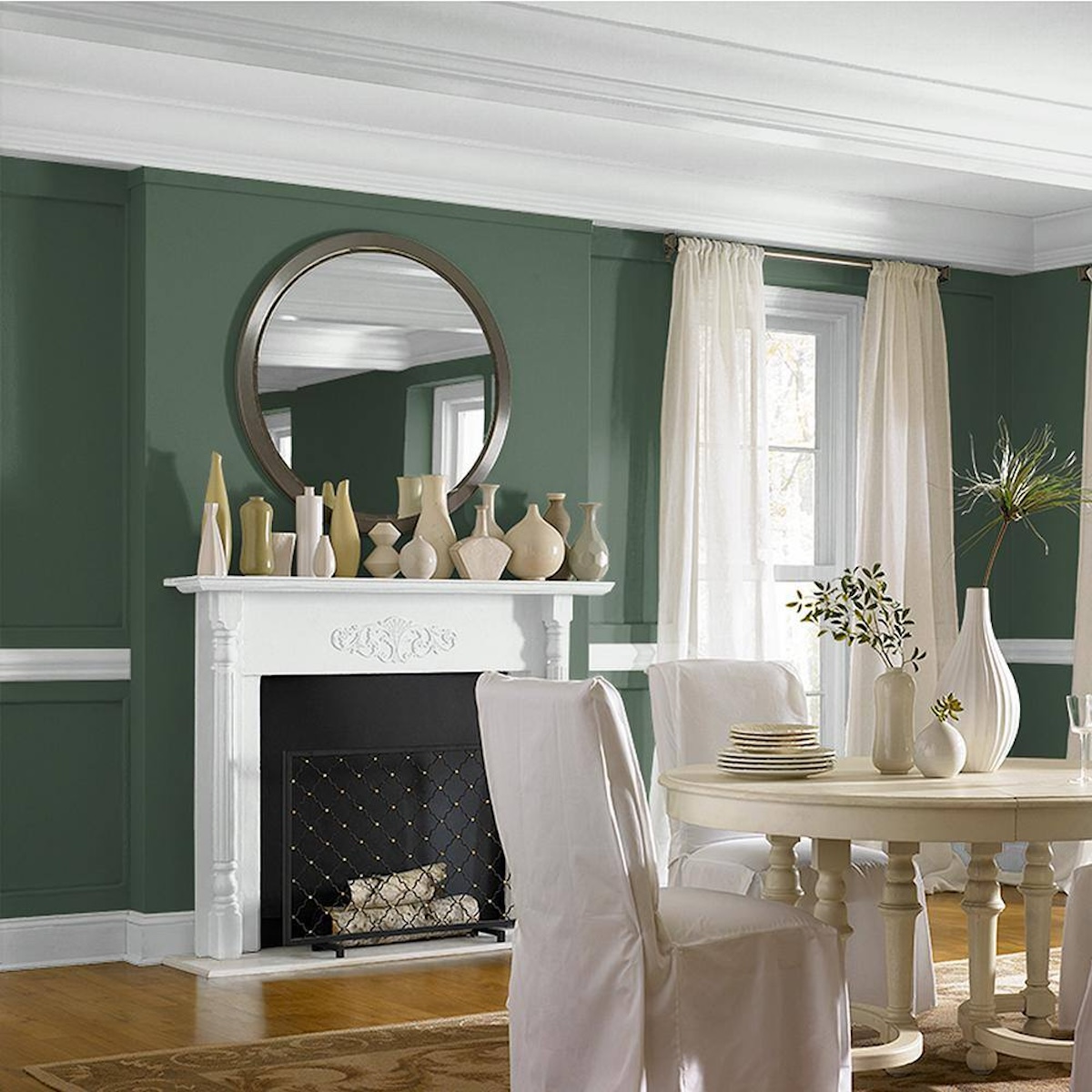
Behr’s Vine Leaf is inspired by the green hues found in a garden, and it brings a natural energy indoors. Its balanced undertones prevent it from feeling overwhelming, even in larger spaces. The color works particularly well when the goal is to create an energizing connection to nature in home offices and sunrooms. In addition to Vine Leaf green painted walls, it’s also a great choice for kitchen cabinets and other built-in architectural features.
Get Vine Leaf at The Home Depot.
14. Hunter Green, Benjamin Moore

A classic dark green paint color, Hunter Green brings timeless elegance with a contemporary edge. Its rich depth makes it perfect for creating sophisticated accent walls or enveloping entire rooms in cozy warmth. Hunter Green works exceptionally well in traditional spaces like libraries and dining rooms, where it creates a formal atmosphere without feeling stuffy. The shade takes on a particularly luxurious quality when paired with brass fixtures and rich wood tones, making it ideal for spaces where you want to make a strong design statement.
Get Hunter Green at Benjamin Moore.
15. Softened Green, Sherwin-Williams
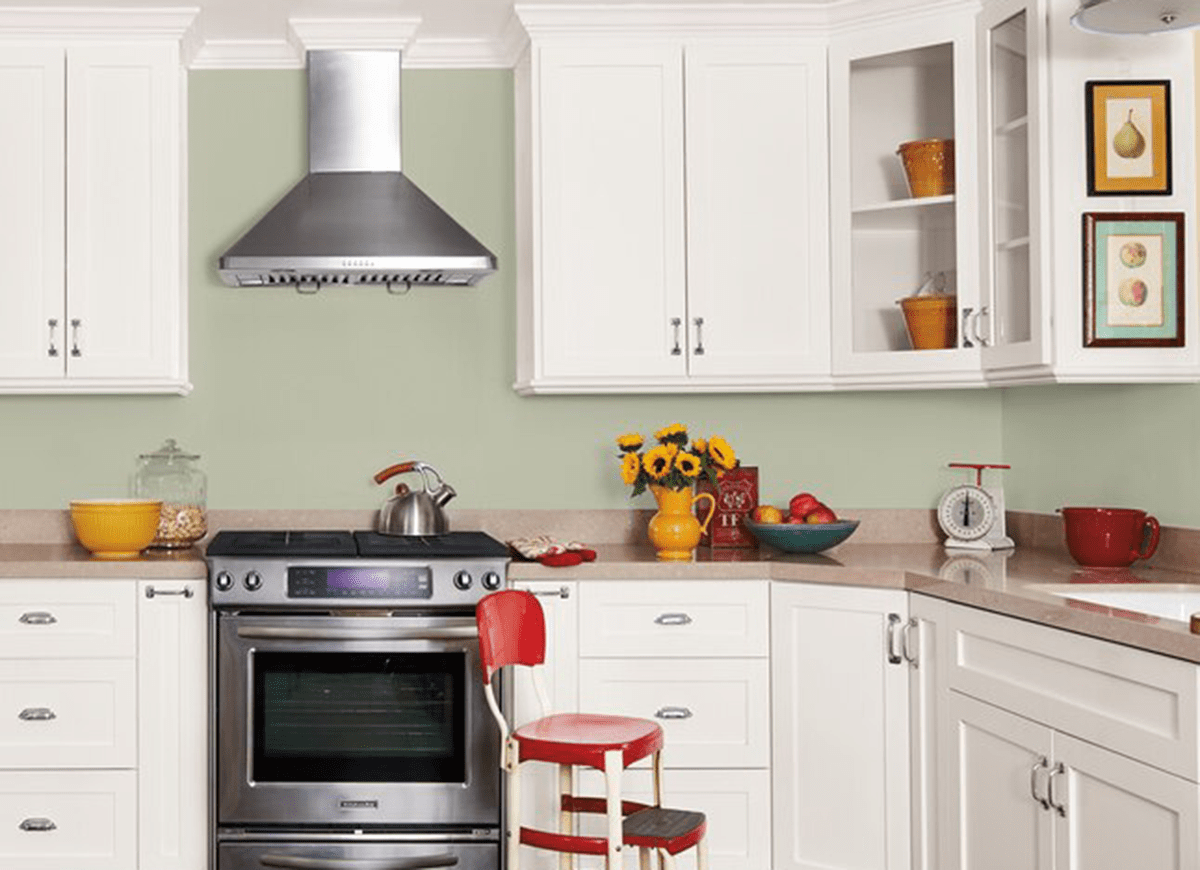
“Softened Green is light, muted, neutral green warmed with slight yellow tones,” says Rogers. “Consider this for multiple areas in the home including common areas, bedrooms, bathrooms, entryways, or offices to create a soothing and subdued environment.” The color’s versatility makes it an excellent choice for open-concept spaces where color flow is important. For a similar choice, Rogers suggests trying the slightly more gray-green Contented, which offers comparable adaptability.
Get Softened Green at Sherwin-Williams.
16. Avocado, Benjamin Moore

Avocado is a warm, organic green that brings retro charm while maintaining modern versatility. Its yellow undertones create a welcoming atmosphere that works particularly well in gathering spaces like kitchens and family rooms. A color that immediately freshens up a room, the green reads as a neutral in some lights while showing its personality in others, making it adaptable to various design styles.
Get Avocado at Benjamin Moore.
17. Hazel, Sherwin-Williams

While the name may suggest that this color contains tones of both green and brown, it’s actually a mid-tone color with a hint of blue. It’s bright and cheerful enough to suit children’s bedrooms but is mature enough to work just as well in bathrooms and kitchens. Because the color is reminiscent of ocean waters, it also brings a fresh coastal feel to a space.
Get Hazel at Sherwin-Williams.
18. Halo, Benjamin Moore

This ethereal color delivers a whisper of sage and creates an airy, peaceful ambiance. Its gentle undertones work beautifully in bedrooms and living spaces where you’re aiming to create a calm atmosphere. When used in rooms with lots of natural light, Halo’s subtle green tint becomes more apparent, while in darker spaces it reads as a sophisticated neutral. The versatility of this barely-there green shade makes it perfect for those who want to experiment with color while keeping the overall color scheme relatively neutral.
19. Breakfast Room Green, Farrow & Ball

Breakfast Room Green is a cheerful yet sophisticated green that brings a garden-fresh feel to a home while maintaining an air of classic elegance. The color works beautifully in breakfast nooks and sunrooms, but also holds its own in more formal spaces like dining rooms. When paired with crisp white trim, Breakfast Room Green creates a bright, uplifting atmosphere that feels both traditional and current.
Get Breakfast Room Green at Farrow & Ball.
The post 19 of the Best Green Paint Colors for Any Room in Your Home appeared first on Bob Vila.
]]>Decorating your home with indoor plants improves the aesthetic and can be beneficial to your health and happiness. However, if caring for plants is too cumbersome and ends up causing a major inconvenience and stress, then it might be a wise decision to try some artificial plants instead.
Fortunately, you can feel some of the positive attributes of natural plants with fake ones, such as their ability to boost one’s mood simply by looking at them. Plus, some real plants can trigger allergies, attract pests inside the home, and even cause toxic reactions to both people and pets.
Opting for certain fake plants that look real might be a solution, especially when it comes to plants that are particularly challenging to care for daily or in certain conditions. “Fake plants are perfect for people who lack the skills, experience, or simply the desire to care for real plants,” says Zeeshan Haider, CEO and founder of Greenry Enthusiast in Sheridan, Wyoming. “They are a great way to add greenery to your home without the worries of keeping real plants alive.” Many artificial plants actually cost less in the long run compared to real plants and can be purchased at places such as Wayfair, Amazon, Target, The Home Depot, Lowe’s, and IKEA.
Here are five plants that are particularly challenging to take care of indoors yet can easily be replaced by fake ones.
1. Elephant’s Ear (Alocasia spp.)
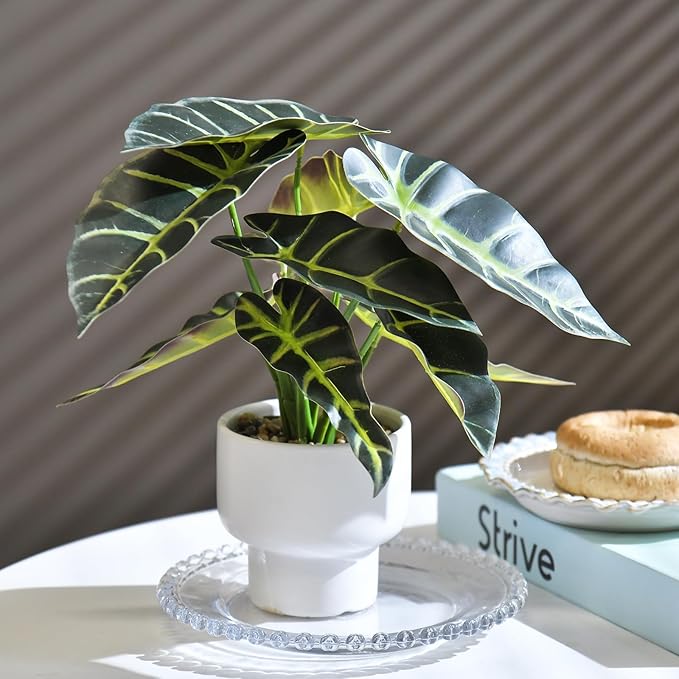
It’s a bit of a challenge to grow alocasia indoors, says Caleb Young of Rare Indoor Plants. “They like high humidity and a warm environment. If the roots stay too wet or it gets too cold, they’re quick to show signs of stress,” he says. Elephant ears require consistently moist—but not soggy—soil since they are susceptible to root rot, which can make them challenging to care for.
This plant relies on bright indirect sunlight when grown indoors, so it is also critical to avoid placing it in full direct sunlight because this can lead to leaf burn. Another major problem with growing this plant indoors is that it is toxic to dogs, cats, horses, and humans, causing mouth and stomach irritation and possibly vomiting if ingested; a fake Elephant Ear would be safer.
2. Calathea (Calathea spp.)

Commonly referred to as prayer plant, pinstripe plant, or rattlesnake plant, calatheas are attractive but difficult to grow indoors, given their requirements for the right amount of light, water, and nutrients. “Calatheas are pretty with their colorful leaves, but they’re hard to maintain when it comes to care,” says Young. He says the plants need high humidity and consistent watering. “If those aren’t spot on, they’ll start showing stress with browning edges,” Young says.
The prayer plant is known to curl, fade, or droop under the wrong conditions. These houseplants do best with indirect light and should never receive direct sunlight because that will lead to leaf burn, causing the leaves to curl, turn brown, and fall off the plant. Given their specific humidity needs, it is necessary to mist the plant with water once or twice a day, run a humidifier, or grow it in a large terrarium. All of these options require additional work to keep the plant flourishing, and to consider an artificial calathea instead. Finally, they are susceptible to spider mite infestations, which can lead to the leaves curling up.
3. Fiddle-Leaf Fig (Ficus lyrata)
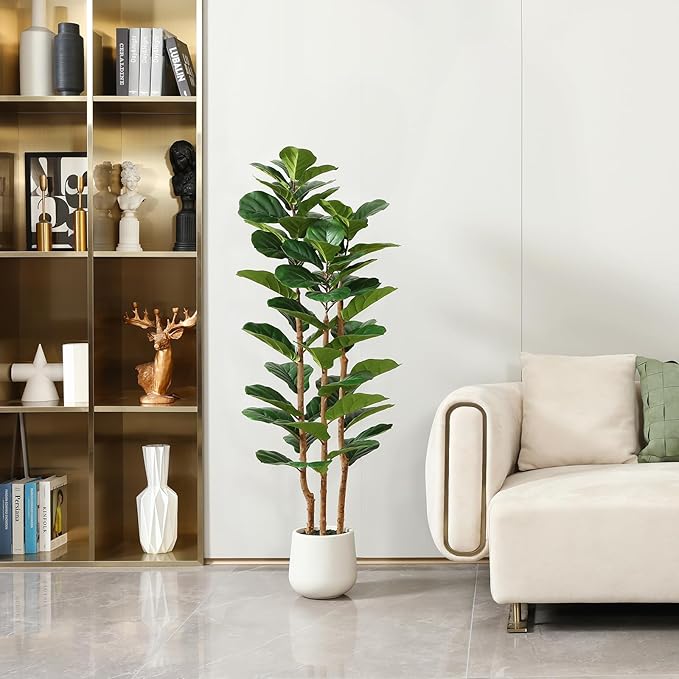
An artificial fiddle leaf fig tree is a much better option than a real one since it’s toxic to pets and people, quite finicky, and hard to keep alive. “The fiddle-leaf fig is an absolute diva—she requires perfection when it comes to lighting, no drafts, and plenty of attention, or she will drop leaves all over the place,” says Haider.
Fiddle-leaf figs love bright, filtered light such as being in front of a window with eastern exposure. If that’s not possible, they might need LED grow lights. However, too much direct sun can burn the plant and turn the leaves brown. The water temperature also has to be just right; if the water is too hot or too cold, then the plant can go into shock. Finally, this plant is susceptible to common pests like mealybugs, scale, whiteflies, aphids, and fungus gnats.
4. Maidenhair Fern (Adiantum spp.)
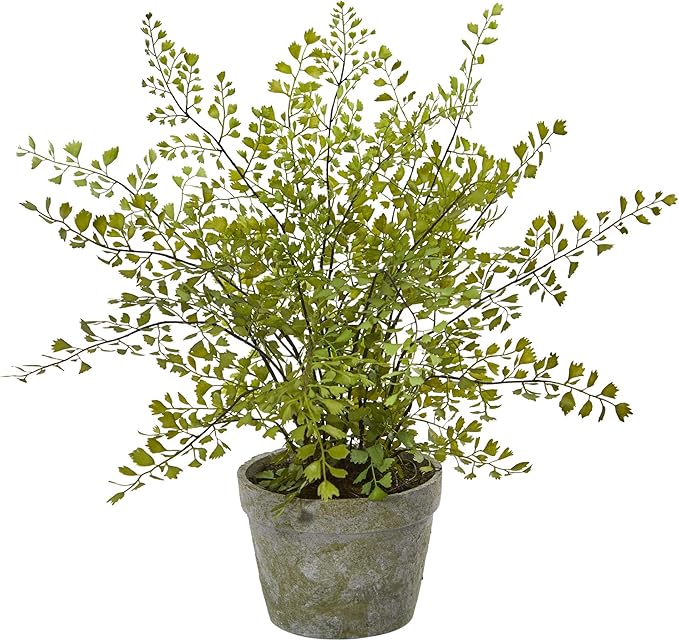
A maidenhair fern is among the hardest plants to grow indoors, mainly because the leaves are so thin. “This plant is super delicate and really hard to keep alive in drier homes,” says Young. “It needs constant moisture and humidity, so if it doesn’t get those conditions, it starts wilting or turning brown pretty fast.”
These plants demand 60 percent humidity, which is unrealistic for a healthy home, and a good reason for a faux fern instead. Therefore, they need to be placed inside an enclosure to control humidity levels, such as a fern case, large terrarium, or glass cloche. They also like bright, indirect sunlight; if they are left in dim spots, they will struggle. Finally, fern spores can trigger allergic reactions like rashes and hay fever.
5. Phalaenopsis Orchid (Phalaenopsis spp.)
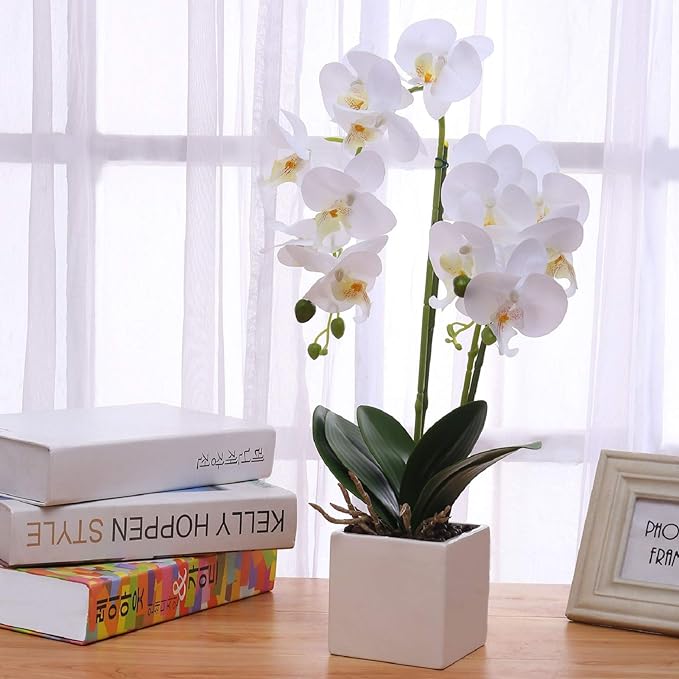
Also called moth orchids, Phalaenopsis orchids are one of the most popular orchids, but can be challenging to care for as a houseplant. “They are gorgeous yet very vulnerable and quite easy to damage,” says Haider. They are also really picky, according to Young. “They need the perfect balance of light, humidity, and watering. A lot of people struggle with getting the watering just right,” says Young. As a result, the plants end up wilting or never blooming, Young adds. These plants also need bright, indirect sunlight, so if a sunny spot inside isn’t available, the best alternative is to purchase faux silk orchids.
The post You Won’t Believe These 5 Houseplants Are Fake (and Better for Decorating Than Their Live Equivalents) appeared first on Bob Vila.
]]>